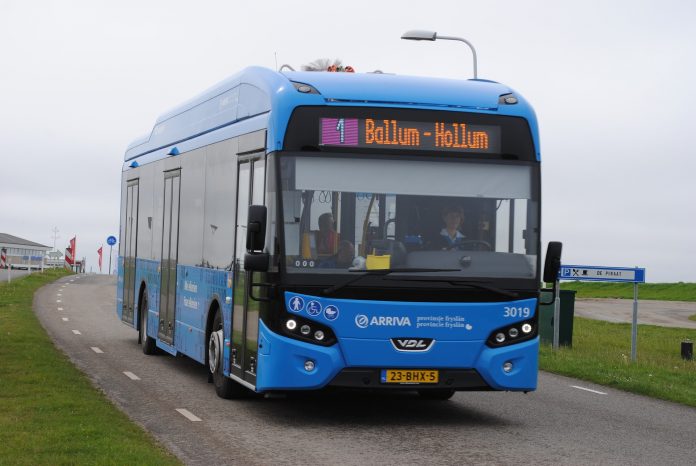Facing transit’s fiscal cliff as $72 billion from four federal bailouts runs out means local agencies must be more realistic.
By Baruch Feigenbaum
The drop in transit ridership resulting from COVID-19 pandemic-induced commuting changes has decimated transit agencies’ financial situations. In late 2020, as many cities continued to ban or restrict various in-person activities, transit ridership was down to 5% of its pre-COVID total. While transit ridership has now recovered to 60% or more of pre-COVID levels, it is still causing financial problems for most transit agencies. Two recent articles sounded the alarm on concerts about the financial situations and long-term ridership hopes.
In a Center Square article by Elyse Apel, Tom Gantert, and Brett Rowland, whose title is the main thesis, “As Transit Fares Plummet, Federal Money Increases 95%,” the writers detail how transit’s farebox recovery rate has declined from a paltry 32.3% in 2019 (before the pandemic) to 18.4% in 2020 and 12.8% in 2021. The 2022 numbers are not yet available but are forecast to fall far short of 2019’s numbers. To offset transit’s ridership losses, the federal government has provided transit agencies with $72 billion in four separate bailouts. In 2021, for example, transit agencies used this spending for $13.1 billion on operational expenses. Yet, for a variety of reasons, this cash windfall has failed to restore transit ridership to pre-COVID levels.
The farebox recovery ratio for operational expenses, which excludes capital spending, is a big problem. In 2019, farebox revenue covered almost half of all transit operating expenses. In 2021, the number was only 19%.
With Democrats retaining the U.S. Senate but Republicans taking control of the House of Representatives in 2023, the transit bailouts will likely end. Yet most transit agencies do not seem to know what their ridership will be in the coming years or have plans to fully fund their systems.
In the second of a multi-part article titled “Looking to the Horizon: How Agencies are Anticipating the Mass Transit Fiscal Cliff,” Eno Center for Transportation’s Garett Shrode, a former Reason Foundation intern, found that transit agencies budgeting multiple years in the future are coming to widely different conclusions. For example, Bay Area Rapid Transit (BART) uses three ridership models: a base scenario that assumes 70% of pre-pandemic ridership, a downside scenario that assumes 60% of pre-pandemic ridership, and an upside scenario that assumes 80% of pre-pandemic ridership.
For the 2026 fiscal year (FY), the upside scenario predicts no budget deficit, the middle scenario forecasts a $118 million deficit, and the downside predicts a $200 million deficit. And the deficits for the middle and downside scenarios grow by more than 50% between 2026 and 2032.
Other transit agencies provided just one forecast figure. And they were all negative. Southeastern Pennsylvania Transportation Authority (SEPTA) predicts a $63 million budget deficit in 2026, growing to $283 million for FY 2028. Washington Metropolitan Area Transit Authority (WMATA) predicts a $527 million deficit for 2025. New York’s Metropolitan Transit Authority (MTA) predicts a $2.26 billion deficit for 2025. MTA still has a massive deficit even with toll revenue (from MTA bridges and tunnels), and future fare increases included.
For funding, many transit agencies’ strategies seem to rely on some combination of increasing fares, reducing service levels, increasing sales taxes and/or general fund revenue.
This lack of a comprehensive strategy makes agencies susceptible to plans that exacerbate budget challenges. For example, the Washington, D.C. City Council recently voted to make all bus transit free in the city, using general fund revenue to pay for this service for all D.C. residents regardless of their income levels. Free transit is a growing movement despite the fact that none of the dozens of reports on it has ever found free transit to be a good idea.
Most importantly, when an economic recession occurs, tax revenues go down, budgets are hit and general fund revenue to WMATA gets cut, who is going to make up the revenue? What politician is then going to propose charging for something that has been free?
Given the information and data in the Center Square and Eno pieces, what do transit agencies need to do? First, they must take steps to reduce their need for subsidies. Even before the pandemic, farebox revenue made up less than one-third of transit agency operating and capital expenses. Most transit agencies need to charge more for rail service, which tends to be used more by affluent riders and provide vouchers to customers who cannot afford the higher fares. Agencies need to advertise more on transit vehicles, in stations, and in transit-oriented developments.
Second, agencies should focus on the customers they have, not the customers they want. In the Washington, D.C., metro area, the decision to build the Silver Line and cut bus service was made in hopes of luring choice riders—those with access to an automobile—out of their cars. The decision has increased costs because the added expense of repaying the capital costs for the Silver Line will take decades. But it hasn’t significantly increased choice ridership since trains are slower than driving and have long headways, the intervals between trains. Further, it is typically more justifiable for transit agencies to subsidize transit rides for working-class commuters than for a rider who drives a BMW.
Finally, in the long term, the entire transit industry needs to be rethought. More transit services should be contracted to improve efficiency and reduce costs. Metro regions should have mobility management agencies. Transit agencies also need to conduct a rigorous evaluation of their service quality. Many transit agencies are failing their customers today, and they were failing them before the COVID-19 pandemic. If transit agencies don’t start making big changes to adapt to changing work-from-home and travel patterns by the year 2030, no level of subsidies will be enough for some of them.
Originally published by Reason Foundation. Republished with permission.
For more great content from Budget & Tax News.











